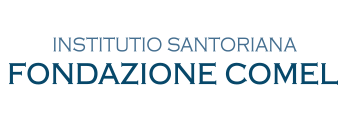APPROFONDIMENTO: Quantitative Physiological Reasoning at the Turn of the Seventeenth Century: The Work of Sanctorius Sanctorius.
Quantitative assessment, especially with regard to health issues, has become very important for our society and is deeply integrated in our everyday lives. This is illustrated by the increasing use of the so-called “wearables,” miniature electronic devices that are worn under, with or on top of clothing. Today people all over the world use smart watches or fitness trackers to monitor their activity, check their calorie consumption, and observe their heartbeat and quality of sleep.
According to Forbes Magazine one in six consumers currently own and use wearable technology and growth in the wearables market is expected to increase 35% by 2019.¹
But this movement of “self-quantification” is not as new as it might seem. In fact, we can trace its origins back to the turn of the seventeenth century. During this time, the physician Sanctorius Sanctorius (1561-1636) developed instruments to measure and to quantify physiological change. Thereby he introduced empirical research into physiology and thus laid the foundations for important self-tracking, or self-quantifying technology. Historical accounts of Sanctorius and his work tend to present him as a genial outsider, who, almost out of the blue, invented a new medical science that profoundly changed modernity. This new science is identified as either iatrophysics, or iatromechanics, or sometimes also iatromathematics. These terminologies are by no means clear categories, but rather flexible terms, which have been applied retrospectively to developments in medical and natural philosophical research.
However, the terms are comparable in that all reflect the importance of measurement and quantification in medical research, and the tendency to apply numerical values and mechanical aspects in this field.
This paper reconsiders the traditional characterization of Sanctorius as the inventor of a new science, examining his activities in relation to the existing medical tradition and contextualizing this work within a broader social framework. Conventionally trained at the University of Padua, Sanctorius adhered to Galenic doctrine, which supported a strong mathematical tradition, especially in pharmacology, and provided the intellectual framework for his development of new theories. As argued here, Sanctorius’ innovative approach to medical research should be regarded as a complement to Galenic medicine, which made it all the more potent. The social context in which Sanctorius worked, and his connection with the intensive technological activities of the Venetian marketplace, must also be considered, as it was in this environment that he developed the measuring instruments that allowed him to implement quantification methods in his research. Sanctorius combined his activity as a university teacher of theoretical medicine in Padua with the practice of medicine in Venice, where he belonged to a circle of Venetian scholars and aristocrats that frequently met in the house of the noble Morosini family. This circle included Galileo Galilei, Fra Paolo Sarpi, Fabrizio d’Acquapendente, Giovanni Francesco Sagredo and Andrea Morosini. At the time, Galileo Galilei was very engaged in practical and theoretical mechanics, and he discussed his ideas in the intellectual milieu he shared with Sanctorius. Moreover, Galileo used two of the same instruments that Sanctorius did – the pulsilogium and the thermoscope. In a letter to Galileo, Giovanni Francesco Sagredo even refers to the thermoscope devised by Sanctorius that Agostino da Mula had seen in Padua.²
Thus, it may be argued that Sanctorius’ interest for numerical aspects of life phenomena, and his subsequent application of quantification, instrumentation and experimentation to his medical research, was fundamentally influenced by the Venetian intellectual circle.
Rather than identifying Sanctorius as the inventor of a new medical science, it is more accurate to regard him as a precursor. As argued by Mirko Grmek in his work La première révolution biologique: Réflexions sur la physiologie et la médecine du XVIIe siècle (Paris 1990), quantification was only one facet of the new medicine. The other was philosophical speculation. This is best represented by Renée Descartes’ deductive physiology, according to which the organism is nothing more than an ingeniously constructed machine. Sanctorius contributed to the development of this greater research method, common to the new medical concepts, but he did not establish the exclusively mechanistic doctrine.
Teresa Hollerbach
Max Planck Institute for the History of Science, Berlin
Santorio Fellow, May 2017
1 https://www.forbes.com/sites/bernardmarr/2016/03/18/15-mind-boggling-facts-about-wearables-in-
2016/#f48f36727323 (last access on June 8, 2017).
2 G. Sagredo to Galileo in Florence. Venice, June 30, 1612, qtd. in: Valleriani, Matteo (2010): Galileo Engineer.
Boston Studies in the Philosophy of Science, Dordrecht and London: Springer, p. 229.



